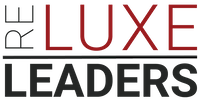Top-producing firms don’t fail for lack of ambition; they fail from operational noise. Deals close, revenue lands, yet margins stall, service levels wobble, and leaders get pulled into firefighting. If your team or brokerage is still running on personality, heroics, and a bloated tech stack, you’re paying a silent tax in drag and waste.
The fix is not another app. You need a real estate operating system—a durable, integrated way of working that sets decision rights, cadence, metrics, and accountability. Below are the seven non-negotiables we install and enforce with clients across RE Luxe Leaders® (RELL™). Build these, and you scale without chaos.
1) Decision Rights and Governance
Speed and consistency start with clarity on who decides what. In an elite firm, authority is explicit, not implied. Map decisions by domain (brand, recruiting, listings, finance, tech), assign a Directly Responsible Individual (DRI) for each, and codify escalation paths. No meeting proceeds without an owner, an outcome, and a deadline.
Why it matters: unclear decision rights create rework, delay, and margin erosion. As McKinsey notes, modern operating models win by clarifying accountabilities and streamlining handoffs. See Designing next-generation operating models.
Action: Build a one-page decision-rights matrix. Review quarterly. If more than two stakeholders can veto a decision, it’s misdesigned.
2) Revenue Engine Standards and Pipeline Math
Elite producers don’t “work leads.” They run a revenue engine with known inputs, conversion gates, and cycle times. Define stage-by-stage standards for your dominant motion—listing-led, referral-led, or partner-led—and calibrate activity to unit economics.
Minimum standards at top teams we advise: daily new-opportunity creation targets by role; stage-specific response SLAs; pipeline hygiene rules (no “stale” opportunities beyond X days); and weekly forecast accuracy within ±5%. If your CRM can’t deliver a forward 90-day revenue view by line of business, rebuild it.
Action: Publish your conversion benchmarks (lead-to-appointment, appointment-to-signed, signed-to-closed) and inspect weekly. Tie marketing spend to verified pipeline lift, not impressions.
3) Talent Architecture and Role Clarity
Scaling requires role purity. Blended roles (producer + ops, ISA + TC) look efficient on paper and destroy throughput in practice. Create scorecards per seat with 3–5 outcomes, 3–5 leading indicators, and explicit capacity assumptions (e.g., max active listings per listing manager; daily conversations per ISA; files per TC).
Cadenced talent reviews sustain performance. Quarterly check-ins (not annual autopsies) reset goals, calibrate capacity, and address coaching gaps. HBR’s work on agile enterprise operating cadence is instructive: fast-cycle planning and review increases alignment and adaptability. See Agile at Scale.
Action: If a seat’s outcomes aren’t measurable weekly, the seat isn’t real. Redesign it before you hire again.
4) Financial Operating Rules
Your P&L must reflect how the business actually works. Separate contribution margin by line of business (residential resale, new development, property management, ancillary services). Allocate overhead rationally, then set guardrails and enforce them.
Practical guardrails we see across elite firms:
- Gross margin floor by business line (e.g., 35–45% before overhead)
- Overhead-to-gross margin cap (typically 30–40% depending on scale and market)
- 90-day forward cash runway at current burn
- Net working capital policy and draw triggers
Action: Move to a rolling 13-week cash forecast and monthly contribution margin reviews. Tie recruiting, marketing, and tech spend to contribution lift, not revenue alone. If a program can’t show payback inside two quarters, sunset or fix it.
5) Cadence: The Meeting Architecture of Execution
Consistency beats intensity. Your real estate operating system lives or dies by cadence—the disciplined drumbeat that drives visibility, accountability, and course correction.
- Daily: 10-minute role huddles to clear blockers and confirm priorities
- Weekly: 60-minute business review; forecast, pipeline health, service metrics; decisions only
- Monthly: 90-minute operating review; P&L, capacity, hiring plan, campaign performance
- Quarterly: 3–4 hour strategy and capability check; reset priorities and kill underperforming bets
Rules: Meetings produce decisions; dashboards precede discussion; owners leave with deadlines. If a metric moves off guardrail, the owner arrives with a fix proposal, not an explanation.
Action: Publish your cadence calendar for the year. Protect it. Missed cadences compound into missed quarters.
6) Data, Dashboards, and a Single Source of Truth
Data inconsistency is an operator’s tax. Establish one schema across CRM, marketing automation, transaction management, and accounting. Define required fields, stage definitions, and reconciliation rules. If two systems disagree, declare the system of record and fix upstream.
Dashboards should inform decisions, not decorate walls. Build role-specific views: leadership (margin, runway, forecast accuracy), sales (pipeline velocity, stage conversion, daily activity), operations (cycle time, error rate, SLA adherence), marketing (CAC, channel ROI).
Action: Limit dashboards to the critical 12–15 metrics that predict outcomes. Review weekly. Automate ingestion; ban manual spreadsheet gymnastics as the primary data flow.
7) Risk, Compliance, and Operational Resilience
Growth without guardrails invites existential risk. Codify compliance workflows (advertising, disclosures, escrow handling), permissions, and audits. Stress-test key-person risk: What breaks if two top producers or your TC lead are out for two weeks?
Build runbooks for incident response (data breach, deal dispute, PR event). Establish vendor redundancy for critical tools and create a 24-hour manual fallback for transaction processing.
Action: Conduct a semiannual resilience drill. Measure time-to-recover for your top five workflows. If you can’t operate core processes under degraded conditions, you’re not enterprise-grade.
Putting It Together: The Real Estate Operating System
A real estate operating system is not a tech stack. It’s an integrated design of governance, cadence, metrics, roles, and behaviors that compound into durable advantage. Implementing it is unglamorous work—definition, discipline, and enforcement—but it’s the difference between a busy practice and a scalable firm.
Leaders who install this architecture see three predictable outcomes within two quarters: cleaner forecasts, fewer operational surprises, and margin expansion from killing waste. For a deeper dive into the models and tools we deploy inside client firms, review the RE Luxe Leaders® Insights library.
Execution Checklist
- Publish decision-rights and escalation paths; review quarterly
- Standardize your revenue engine; enforce pipeline hygiene and SLAs
- Clean role design with scorecards and capacity assumptions
- Adopt a rolling 13-week cash forecast and contribution margin reviews
- Install a non-negotiable operating cadence (daily/weekly/monthly/quarterly)
- Consolidate data to a single source of truth; limit dashboards to decision-grade metrics
- Run resilience drills; close compliance and key-person gaps
This is how firms move from personality-led to process-led. It’s also how owners protect enterprise value and make themselves optional in the day-to-day. Build the system now, before growth exposes the gaps.





